‘Beginning of a different kind of revolution.’ Northeastern researchers participate in the inaugural ClimaTech conference
The inaugural ClimaTech conference brought together researchers, entrepreneurs and innovators to confront the world’s toughest challenges.
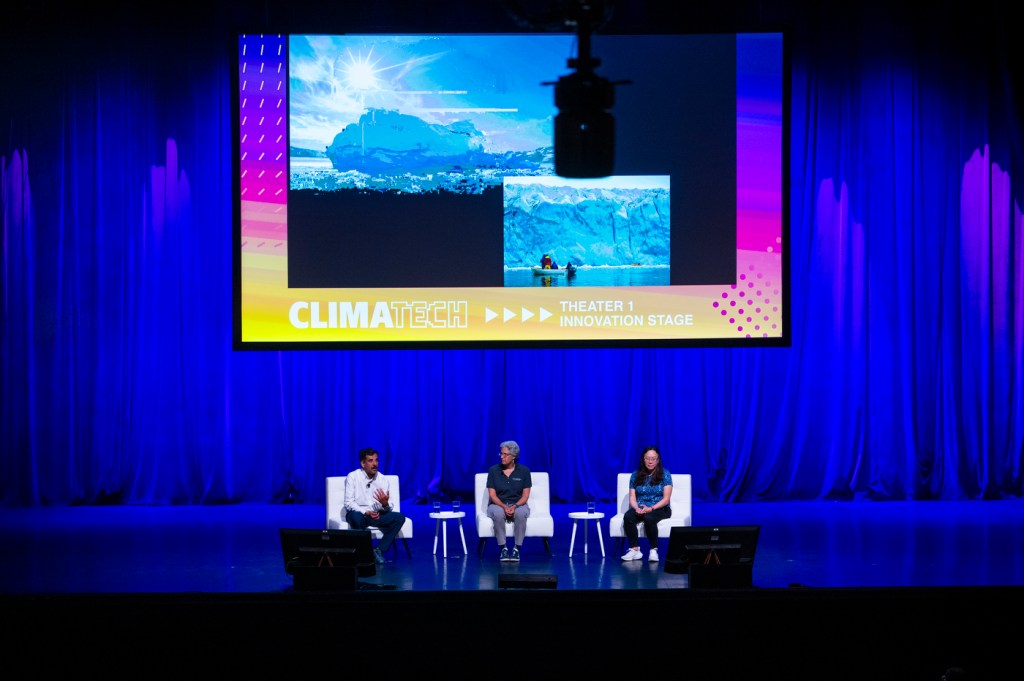
Northeastern University researchers participated in the inaugural ClimaTech conference in Boston, joining hundreds of energy and technology experts from around the world who gathered to explore how protecting the environment can contribute to economic growth.
Jennifer Dy and Hanumant Singh — with Sarah Das of the Woods Hole Oceanographic Institution — conducted a panel conversation called “Climate Change: Cryosphere to the Coast,” presenting some of the dangers posed by rapid sea level rise from the polar regions to the Massachusetts coastline.
Meanwhile, Julia Hopkins, the lead designer behind the Emerald Tutu, a network of floating vegetation pads that can help displace floodwaters, gave a Ted Talk-style presentation titled “The Future of Coastal Resilience Infrastructure.”
Split between the House of Blues and the MGM Music Hall at Fenway, ClimaTech took on the air of something like a rock concert, with guests taking a stage usually reserved for guitarists and drummers.
Measurements and predictions
Singh, a professor in the College of Engineering at Northeastern University, kicked off his panel by describing some of his polar expeditions and their findings.
“I like to say I’m bipolar,” he joked. “I’ve spent the last 20 years of my life using robots in Antarctica, Greenland and the Arctic.”
“We all know things are melting,” he said, and they are “doing so at an increasingly fast rate.” Singh described how his recent efforts have focused on developing improved sensors to understand the speed and effects of glacial melt.
Using robots means an added layer of safety for human scientists who don’t have to stand next to calving glaciers, Singh said. Even a small glacier, he continued, can be “bigger than this entire block that comprises Fenway, and five times as tall.”
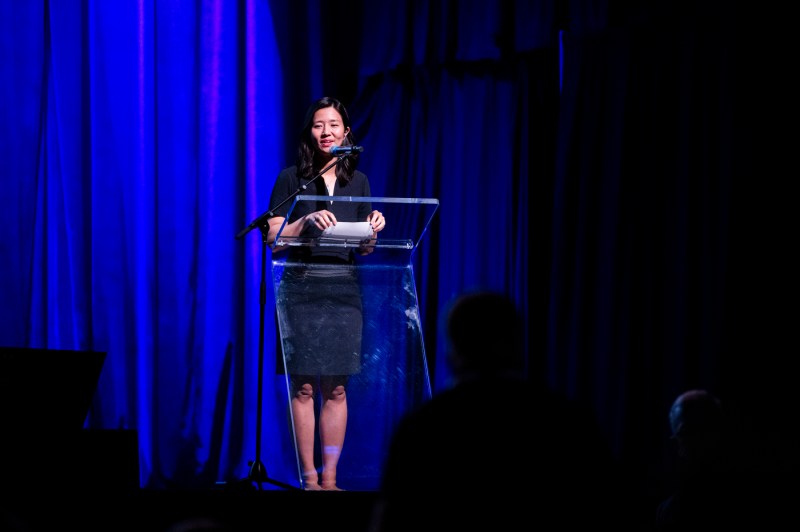
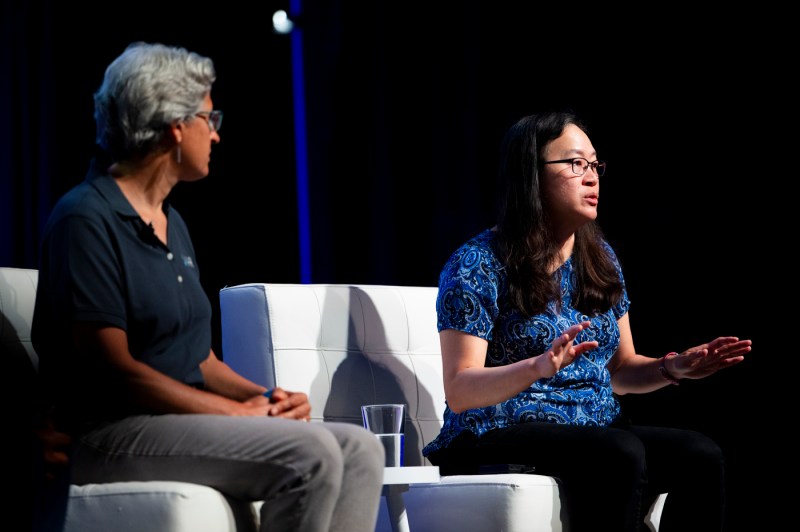
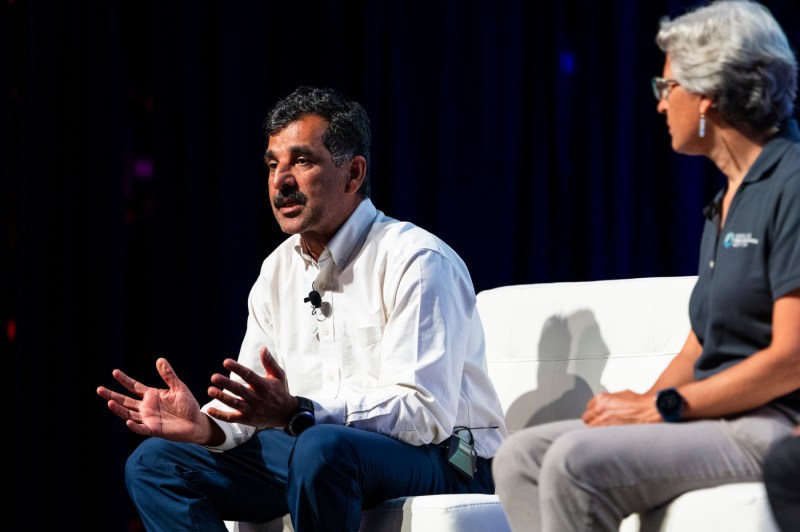

Das, an associate scientist with the Woods Hole Oceanographic Institution, described some of the effects on the local Massachusetts environment.
The Arctic, she said, is now warming four times faster than the global average, but “what happens in the Arctic doesn’t stay in the Arctic.”
“Boston is really at the epicenter of elevating sea level rise rates, and that is leading to increased amounts of flooding,” she continued.
Dy, a professor of computer science and electrical and computer engineering at Northeastern, discussed how advances in artificial intelligence can be employed against climate change, for instance by “forecasting extreme events,” she said, or helping to design new, more sustainable materials.
But because AI relies on large amounts of data to make its determinations, “Another challenge to models is: How do we make predictions at the local scale?”
“We have powerful algorithms. Climate change is here. What can we do as an AI community?” she asked.
Soft solutions to hard problems
Later in the morning, assistant professor of civil and environmental engineering Julia Hopkins began her presentation with an entreaty: “Let’s talk about how to keep cities from flooding.”
The lead designer behind the Emerald Tutu, a network of floating vegetation pads that can help displace floodwaters, Hopkins detailed how what’s needed, as sea levels rise and storms worsen, aren’t solely hard solutions — like levees and flood walls — but also “soft” solutions.
Hard solutions do work, Hopkins said. We know that sea walls will protect cities from storm surges, but only to a certain extent. “They can be designed to a specific amount of wave attack,” she said. Beyond that specification, walls fail, the ocean comes over the top.
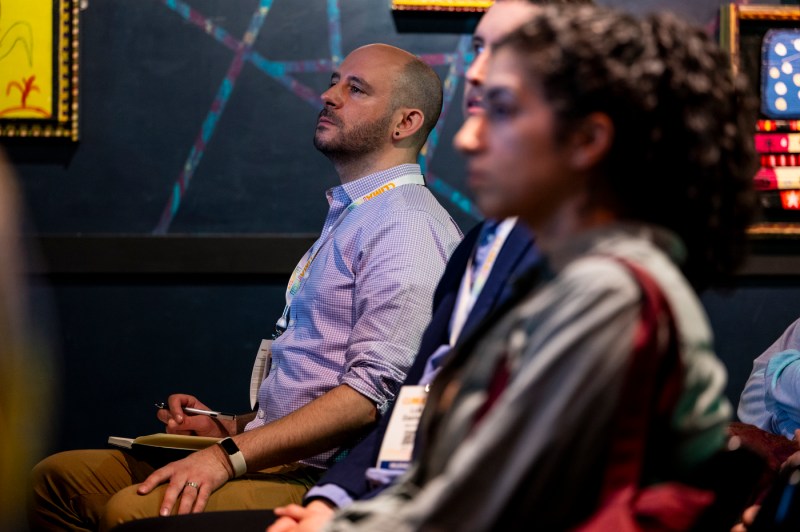
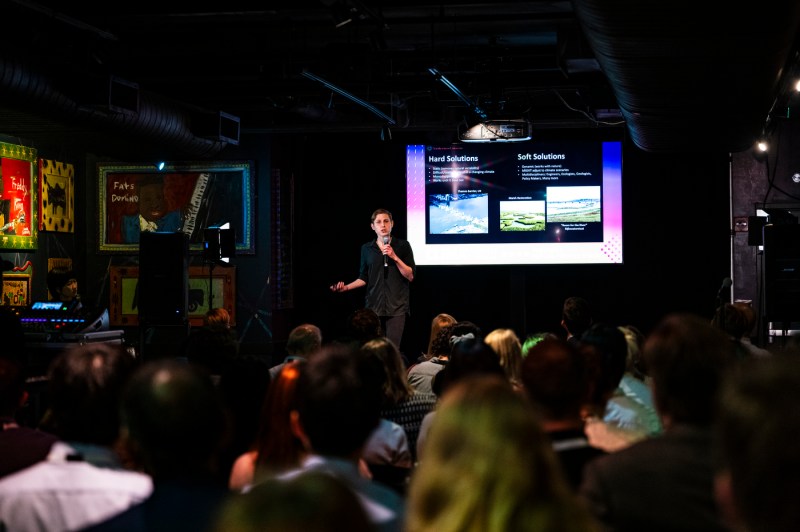

Designing for this kind of uncertainty — how high will the worst storms become? — requires the flexibility of so-called soft solutions, like Hopkins’ Emerald Tutu, which employs a dispersed network of floating, lily-like pads covered in mats of plant material.
“The tutu is a way of restoring a marsh without actually restoring the marsh,” Hopkins has said previously.
Hopkins and her team are currently working on ensuring that the floating platforms will remain effective in different seasons, as harsh winters force much of the vegetation into hibernation.
However, “the last design parameter,” she says, “is open dialogue and constant communication with the communities that we think might benefit from this” intervention.
Featured Posts
Throughout the conference, the stakes of the problems — sea level rise, warming temperatures, etc. — were acknowledged, but levied against these problems were the solutions the guests and attendees were themselves engaged in producing.
Boston Mayor Michelle Wu opened the events on Wednesday by noting that “Boston has always been a city that bets big on the future of humanity.”
We are “in a place where, and at a moment when, you have the energy of the entire city behind you,” Wu told the attendees, who included academics, entrepreneurs and innovators. “Boston is the hub of the universe,” she said, “and we are working every day to become the hub of climate tech as well.”
“The science is incontrovertible,” Singh said during his panel. But, Das also said, “the future is not written in stone.”
“What’s really nice about a conference like this,” Singh said in reference to the many industry partners in attendance, “is that we have people who are really interested in trying to solve problems.”
“You are here in the birthplace of democracy and the beginning of a different kind of revolution,” Wu noted. A revolution “that will chart the course of not just one nation, but the entire planet.”











